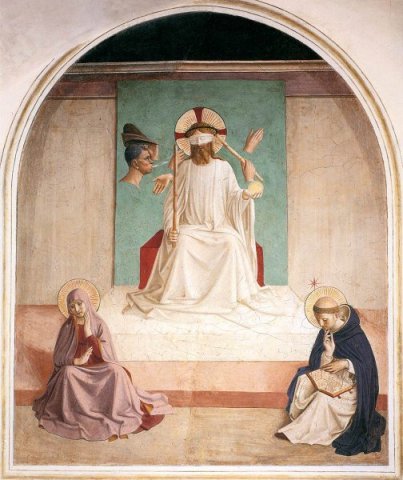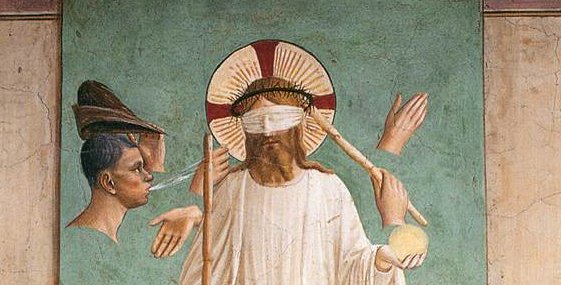|
The Passion of Christ |
|
The Crown of Thorns and the mockery of Christ - 2 |
|
Scenes such as the scourging and mocking of
Christ were by and large not popular subjects for later artists,
though the twisting and turning of bodies was attractive to some mannerist
influenced painters. The need for straightforward narrative images had
passed; religious art now focussed on the two functions of imparting a
theological message and providing art appropriate for private or public
devotion. These events provided little theological content, and the
violence made them unsettling for devotional images. One solution was to
avoid depicting the actual assaults and show the result of that
violence in 'Ecce Homo' paintings. I'll be looking at those later. One early Renaissance artist, however, cracked the problem of how to turn a scene of horrific violence into a quiet, devotional image. That artist was Fra Angelico. |
|
|
|
This image is a fresco from cell 7 at the San Marco monastery in Florence, and may have been painted, or partly painted, by Fra Angelico's assistant, but as that was Benozzo Gozzoli quality is not going to be a problem. Let's have a look in detail at what is happening in the painting. |
|
|
|
Instead of showing explicit violence, the key
elements of the mocking of Christ appear on a screen behind Christ - the
spitting head, the hands, the rod pressing the crown of thorns on to his
head. The blindfolded Christ suffers in quiet dignity; the reed in his
hand has become a sceptre of kingship. In the foreground, the Virgin and St. Dominic sit in quiet contemplation, providing a model for that Dominican friar gazing at the fresco on the wall of his cell. |

